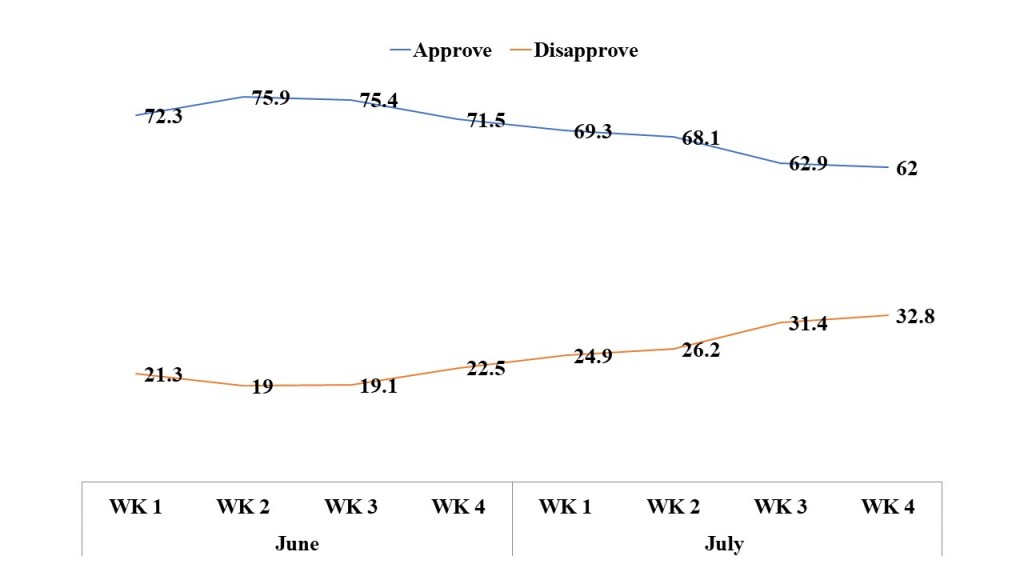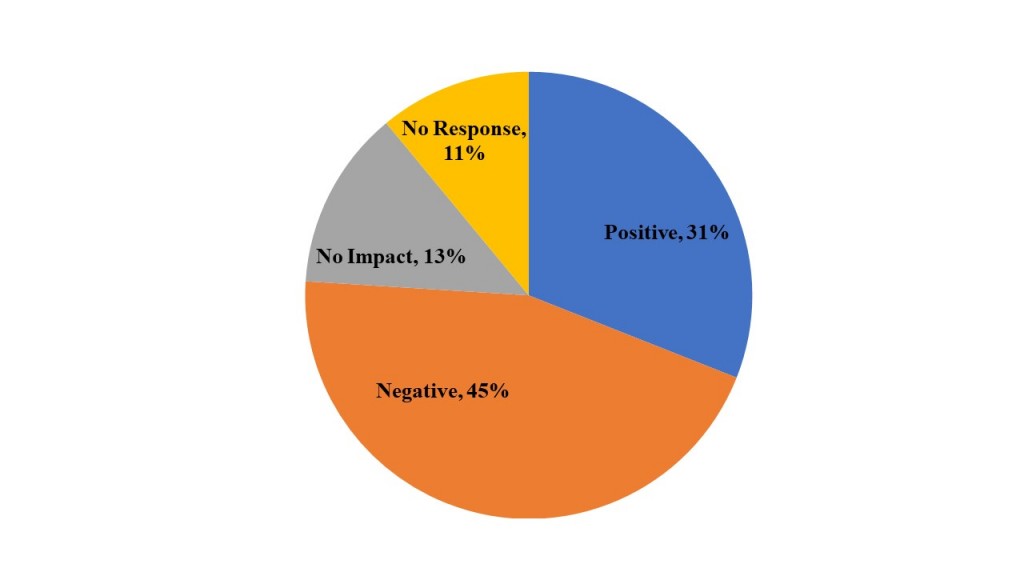North Korea
North Korea took a major step towards dismantling the Sohae Satellite launching station.[1] US Secretary of State Mike Pompeo stated that inspectors should be present to monitor the dismantling process.[2] North Korea also returned the US MIA/POW on July 27.[3] Although the remains must still be verified, North Korea appears intent on demonstrating good faith.
South Korea’s Ministry of Defense announced its plan to draw down troop presence along with DMZ.[4] In addition, the Ministry of Defense announced that the two Koreas agreed to hold military-military meeting on July 31 at the Panmunjom Peace House.[5] The meeting was proposed by North Korea.
“Wartime Martial Law and Joint Action Plan”
On July 20, the Blue House released the “Wartime Martial Law and Joint Action Plan,” which laid out a detailed plan for declaring martial law during the candlelight protest against former President Park Geun-hye. The 67-page report includes details about troop deployment, media censorship, and military control of various government apparatus.
Some have questioned whether this was a planned coup d’etat by the South Korean military. Colonel Min Byung-sam stated that Minister Song Yong-moo approved the document while Minister Song adamantly denied this claim.
The special prosecutor began an investigation into the matter while former Defense Minister Han Min-koo has been barred from leaving the country.[6] There are concerns that this incident could seriously undermine the military’s credibility.[7] On July 26, President Moon ordered the reform of the Defense Security Command.
Moon’s Approval[8]
President Moon’s support rate dropped to 62%, a record low since his inauguration. The decline in approval can be attributed to the government’s minimum wage policy and new tax measures. The ongoing controversy surrounding the ‘Wartime Martial Law and Joint Action Plan’ document appears to be another contributing factor.[9]
Monetary Policy
On July 18, the Ministry of Strategy and Finance (MoSF) announced its economic outlook for the second half of 2018. Minister Kim Dong-yeon and other top-ranking officials in MoSF revised the growth outlook to 2.9% from 3%. They also stated that growth and employment will be difficult. One remedy is to boost employment and income subsidy for low-income households through increased spending via supplementary budget amounting to about KRW 4 trillion (USD 3.53bn).[10] The beneficiary of such policy are likely to jump from 1.66 to 3.34 million households.[11]
Failures of Korean Energy SOEs
On July 26, the Ministry of Trade, Industry and Energy (MOTIE) in cooperation with a civilian task force on foreign resource development released a report identifying risky investments made by utilities. The Korea Gas Corporation (KOGAS) invested USD 384 million in the Akkas condensate fields in Iraq during 2010. Over the following four years, KOGAS saw losses of USD 379 million. The report also identified that KOGAS invested an additional USD 139 million in 2013 in the build-up to the Iraqi Civil War. As of the end of 2017, three government-owned corporations, KOGAS, Korea National Oil Corporation and the Korea Resources Corporation, together ran up a loss of KRW 15.9 trillion (USD 14.2 billion). The report calls for a restructuring of these corporations as a response to management deficiencies.[12]
Inclusive, People-Centered Growth
On July 23, President Moon Jae-in announced that he intended to implement economic policies that advanced inclusive, people-centered growth. Commenting that neoliberal economic policy only widened income disparities, President Moon called for a new approach to his economic policy around the minimum wage and tax increase against the wealthy.[13]
Public Support for Minimum Wage Increase[14]
The Corporate Restructuring Act
The Financial Services Commission (FSC) of Korea stated that the Corporate Restructuring Act must be revived. On July 22, the FSC announced the creation of “the Creditor Financial Institutions Task force for Corporate Restructuring” as a temporary stopgap measure. This task force would permit financial institutions to work with the government in the corporate restructuring process, especially as it relates to corporate debt.[15]
EU Steel Tariff
The European Union (EU) announced on July 19 that it would apply a 25% tariff as a response against US protectionism against steel. 23 steel product categories were identified, most of which are also major Korean exports. South Korea is the fourth largest steel exporter to the EU.[16] In accordance with the WTO law (Article XIX of GATT 1994 and Article VI of the Agreement on Safeguards), provisional safeguard measures may be kept in place for a maximum of 200 days, which means that Korean exports shall be subject to the tariff until February 2019.[17]
[1] “뜸 들이던 北, 동창리 발사장 해체… 美에 체제보장 압박 메시지”,동아일보, 2018년 7월 25일.
[2] “트럼프, 북 서해발사장 해체 “환영”…폼페이오 “김정은 약속이행””, JTBC, 2018년 7월 25일.
[3] “65년만의 귀환…미군 유해 55구, 정전협정날 왔다”, 중앙일보, 2018년 7월 27일.
[4] “국방부 “GP 병력·장비 시범적 철수…JSA 비무장화도 추진 중””, 조선일보, 2018년 7월 24일.
[5] “국방부 “남북 장성급군사회담 31일 개최 합의””, 중앙일보, 2018년 7월 27일.
[6] “국방부 특별수사단, 계엄령 문건 작성 소강원 참모장 소환 예정···기무사 압수수색”, 경향신문, 2018년 7월 26일.
[7] “’계엄령 문건’ 난타전 벌인 장관-기무사…흉흉한 군심”, 조선일보, 2018년 7월 25일.
[8] Realmeter, Date: July 16-18; sample size: 1,504; margin of error: +2.5 at the 95% confidence level.
[9] “文대통령 지지율 62%…전주대비 0.9%p↓, 6주째 하락세”, 중앙일보, 2018년 7월 26일.
[10] “정부 ‘경제 어렵다’ 인정…4조원 추가로 풀어 내수 진작”, 한겨레, 2018년 7월 18일.
[11] “저소득층 근로장려금 ‘166만가구→334만 가구’ 대폭 확대”, 한겨레, 2018년 7월 18일.
[12] “해외자원개발 공기업 3사 손실 16조”, 동아일보, 2018년 7월 27일.
[13] “포용적 성장, 사회안전망에 초점… 퍼주기式 소득성장과 달라”, 동아일보, 2018년 7월 24일.
[14] Gallup Korea, Date: July 17-19; sample size: 1,002; margin of error: +3.1 at the 95% confidence level.
[15] “채권금융기관, ‘기촉법’ 대체 협약 마련…내달 1일 시행”, 중앙일보, 2018년 7월 22일.
[16] “EU도 철강 수입제한… ‘한국수출 빨간불’”, 동아일보, 2018년 7월 20일.
[17] Agreement on Safeguards, Marrakesh Agreement Establishing the World Trade Organization, Annex 1A, 1869 U.N.T.S. 154, Art. 6.
Contributing Staff: Kim Seonkyung and Lee Soo-hyun
Editor: J. James Kim

 Facebook
Facebook Twitter
Twitter
